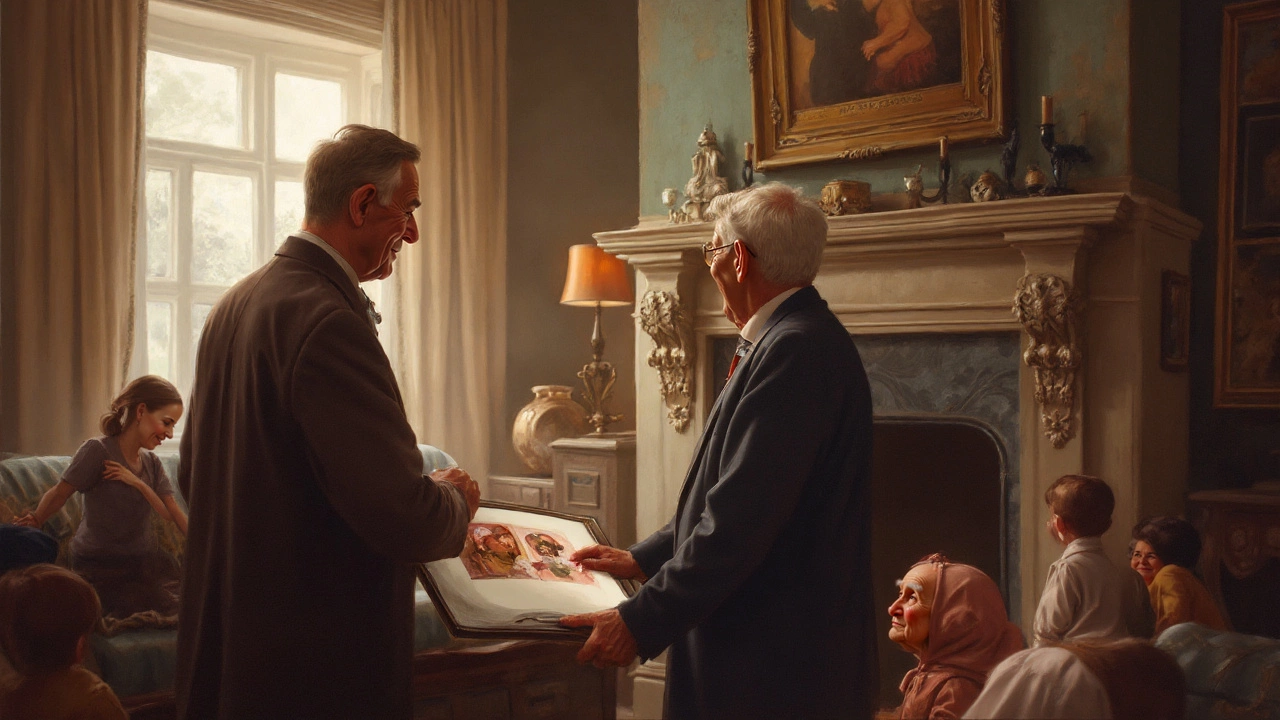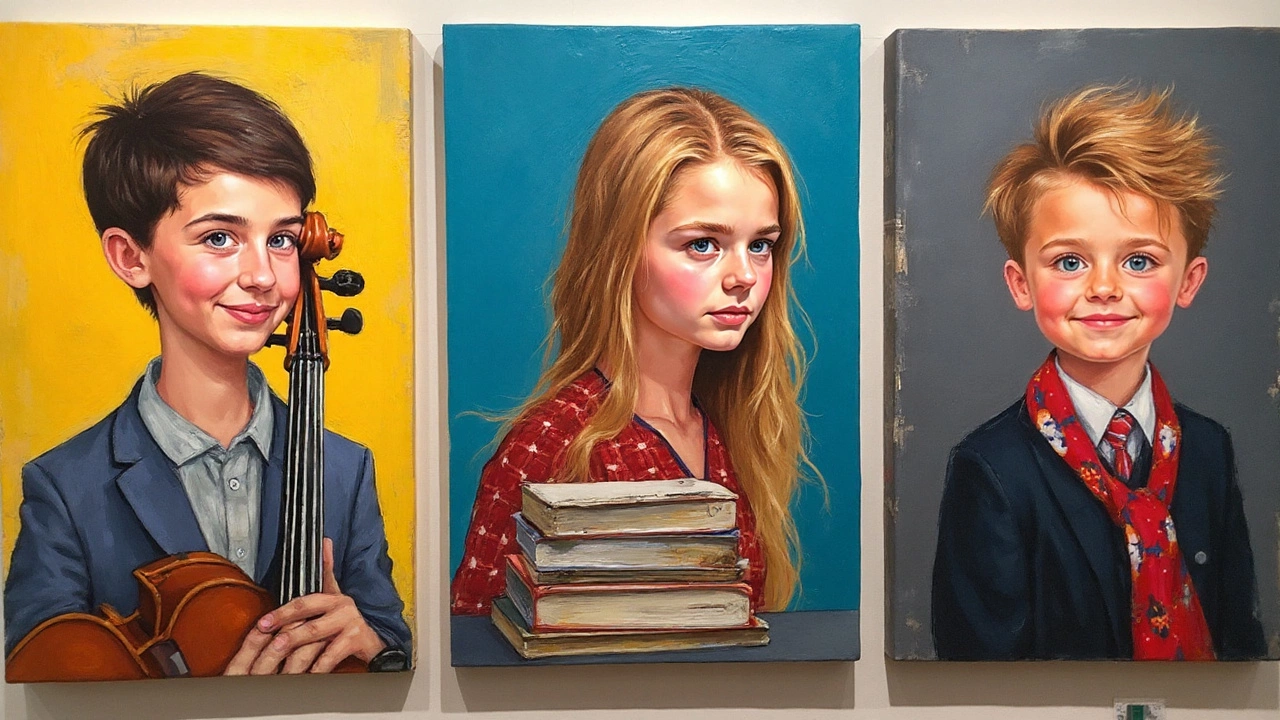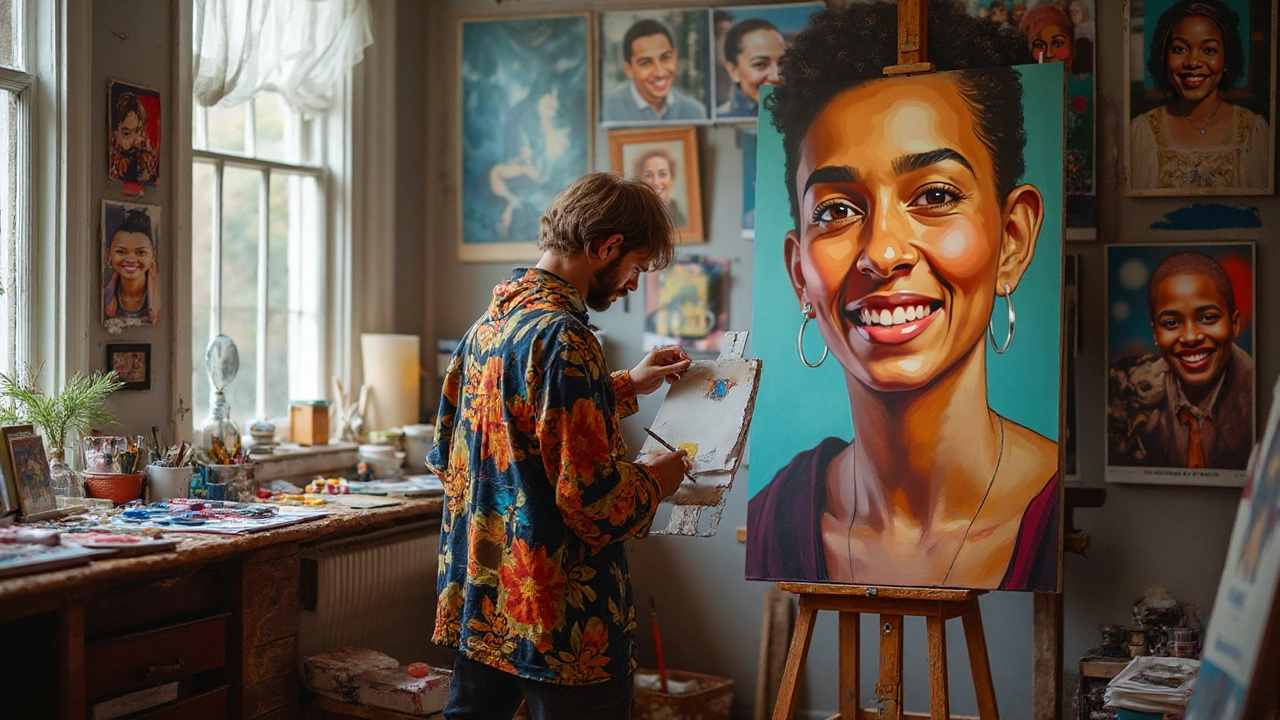Imagine stepping into a room and seeing your face, larger than life, staring back from a crackling canvas—fresh brushstrokes still glistening in the light. Sounds like something ripped out of an old history book, right? But here’s the kicker: portrait painters still exist and work today. You don’t need to be a monarch, a movie star, or a mysterious aristocrat to have your likeness rendered in oils or pastels. Real humans, working in the twenty-first century, are still capturing emotions, personalities, and even quirks with paint and brushes. This isn’t nostalgia clinging to life—it’s a lively, evolving field, blending old-school charm with today's tech-savvy touch.
The Modern Face of Portrait Painting
If you think portrait painters packed up their easels along with powdered wigs and ruffled collars, think again. Take a stroll through a contemporary art fair or scroll Instagram, and you’ll spot rich, skillful painted portraits popping up everywhere. Sure, styles have shifted. There are fewer stiff velvet backgrounds and more vibrant, quirky, or even hyper-real and abstract takes. The tradition is alive, just transformed.
In fact, there are thousands of professional portrait painters across the globe, and their work ranges from classic to wildly experimental. The Portrait Society of America, based in Tallahassee, Florida, boasts more than 2,500 members as of July 2025—most of whom are working artists, not just hobbyists. And that’s only one of many global groups dedicated to the craft. Even the Royal Society of Portrait Painters in the UK, founded back in 1891, regularly welcomes fresh memberships from artists using everything from centuries-old oil techniques to wild, mixed-media inventions.
Who hires a portrait painter in an age overflowing with selfies? People who want something deeper, richer, more lasting than any snapshot on their phone. There’s a unique intimacy—almost a visual conversation—that you get with a real painting. Some of the most celebrated commissions from the last decade include the official portraits of former US President Barack Obama and First Lady Michelle Obama, painted by Kehinde Wiley and Amy Sherald. These paintings didn’t just nail the subjects’ likenesses; they broke the internet with their bold styles and personal symbolism.
But it’s not all government officials and celebrities. CEOs commission portraits for their office halls. Families splurge on painted keepsakes for anniversaries, weddings, or memorials. Even pet owners get Fido immortalized in oil. That’s not to say getting your portrait painted is always cheap. The average professional portrait can run from $2,000 up to $50,000 or more, depending on the artist, the size, and the level of detail. Some painters offer small, speedy "alla prima" portraits—done in a few hours and just a few hundred bucks—while others spend months laboring over a single canvas.
Let’s peek at some surprisingly relatable moments from today’s portrait scene:
- New York–based artist Alonsa Guevara’s current waitlist for a single portrait? Seven months. Her lush, luminous works are booked via Instagram DM.
- British painter Tom Croft uses video calls to create custom oil portraits for clients worldwide—no fancy studio sittings required.
- During the pandemic, painters turned to remote sittings with Zoom, WhatsApp, or emailed photos as references. This blended old skill with new tech and kept traditions alive, even during lockdown.
You’ll also find portrait collectives on Etsy, where emerging artists offer bargain prices just to hone their skills and fill their portfolios. The craft isn’t just surviving—it’s thriving in unexpected ways.
| Year | Members (Portrait Society of America) | Average Commission Price (USD) | No. of Painted Portraits Commissioned (USA, est.) |
|---|---|---|---|
| 2015 | 1,200 | $2,500 | 5,600 |
| 2020 | 2,100 | $5,500 | 7,400 |
| 2025 | 2,500+ | $7,200 | 8,000 |
While the numbers are small compared to the flood of daily digital images, they prove a steady, growing interest in portrait painting even now.

Why People Still Commission Painted Portraits
It’s easy to see why people would swap their phone gallery for a piece of painted art. There’s an emotional magnetism when a talented artist takes the time to really see you and then distill that into paint. That’s something a quick phone snap just can’t do. Painted portraits have also become a trendy way to mark milestones in a person’s life—new jobs, retirements, weddings, or the arrival of a new baby. And, yes, they’re still a favorite for memorializing loved ones who’ve passed.
The process itself can feel like a ceremony, even now. Sometimes a sitting lasts hours, with the artist chatting, coaxing out little details about a person’s hobbies, insecurities, or history while sketching away. Portraits made from photographs are common, especially if the subject lives far from the artist or has a packed schedule. But even then, it’s more than copying shapes—artists dive into backgrounds, poses, and sometimes even ask you about your favorite color or your taste in music. It’s way more personal than posing for a quick snapshot.
Want a bit of art-world trivia? In 2022, over 6,000 painted portrait commissions were made worldwide, not counting digital or photography-based work. These range from intricate, hyper-realistic oil paintings to splashy, impressionistic pieces brimming with wild brushstrokes. There’s even a category of "speed portraits,” cranked out live at events for guests—kind of like a high-end caricature, minus the comedy chin.
Portrait painters are also bringing something special to social causes. In 2024, the Portraits for NHS Heroes project in the UK generated over 2,500 painted portraits of medical workers, all donated by artists as a thank-you. This global story went viral and helped revive interest in the artform among new generations.
Believe it or not, some people are looking for magic, too. There’s something mysterious about paint—a feeling of alchemy. You never really know how an artist will interpret your features, mood, or vibe. Portraits can flatter, idealize, or grab onto a quirky habit, like the way someone tugs at their earring or glances away in thought. A good painter can catch the tiniest sparkle in someone’s gaze or the exact curve of a crooked smile.
Looking to commission a painted portrait? You don’t need to be a millionaire to get something meaningful. Here’s how most people start:
- Check online portfolios to find a style you like. Try Instagram hashtags like #portraitcommission or browse artist directories from societies like the Royal Society of Portrait Painters or Portrait Society of America.
- Email the artist directly. Usually, you’ll talk about your vision, budget, and the timeline. Some painters have long waitlists, but others can work within a few weeks.
- Discuss references. Will you do a live sitting, or send high-res photos? Some artists like to interview the subject for ideas about background colors or special objects to include.
- Agree on cost and payment schedule. Most artists ask for a deposit up front, with the balance paid after you approve a final photo or see the piece in person.
- Many will offer shipping (carefully packaged, of course!) if you’re not local.
Don’t forget digital artists—they're a growing part of the scene and offer much more affordable options, often with the ability to print your piece at any size you want. But nothing replaces the experience of seeing real brushwork and pigment in the flesh.

Portrait Painting: Keeping an Old Art Alive
So why do portrait painters still matter, given all the quick digital options out there? People are drawn to authenticity. In a world filled with filters and auto-corrected photos, a portrait made by hand feels real. Each brushstroke is a choice, every layer of color tells its own story. Painted portraits can age with grace, unlike digital files that might disappear with the next tech update.
There’s also a healthy demand from art collectors and even museums, who argue that portrait paintings give a richer perspective on people and cultures. A painted portrait isn’t just a record; it’s an interpretation—one artist’s way of connecting and saying, “I see you.” For families, portraits can become heirlooms, passed down through generations. Some people even believe there’s a bit of luck and life captured in the oils.
Even in 2025, art schools continue to offer dedicated tracks in portraiture. The Florence Academy of Art and London’s Royal Drawing School both see significant enrollment in their portrait painting classes—proof that the techniques haven’t vanished. Social media has just made it easier for newcomers to reach a crowd. It’s not rare to come across young artists, sometimes under 20, doing incredible commissions directly from their bedrooms using little more than a laptop, a set of brushes, and relentless determination.
Tech is making a difference, too. High-resolution cameras and video calls let painters reach clients across continents. Some use digital tablets to plan compositions or test color schemes before starting the "big" work on canvas. Yet, the physical act of layering paint, blending skin tones by hand, and the unpredictability of a real brushstroke? That’s something you can’t code or automate, no matter how slick AI gets.
There’s an appetite for portrait challenges, too, like the Sky Arts Portrait Artist of the Year competition, broadcast annually in the UK and watched by millions. This show puts painters through high-pressure, real-time sittings with famous faces, showing just how tough—and rewarding—the work can be. You can’t fake the tension of a blank canvas staring you down, or the thrill when a splash of color suddenly becomes a lifelike cheek or laughing eye.
One final tip: If you’re feeling inspired to try painting a portrait at home, start with a friend or family member who’s willing to sit for a while. Use soft, natural light, and don’t rush. Even after centuries, patience and connection are the biggest secrets in the world of painted portraits.
Look around next time you’re in a local gallery, an office, or even scanning social media. Portrait painters haven’t vanished into history books—they’re thriving in corners you might not expect, quietly keeping a timeless craft alive.

